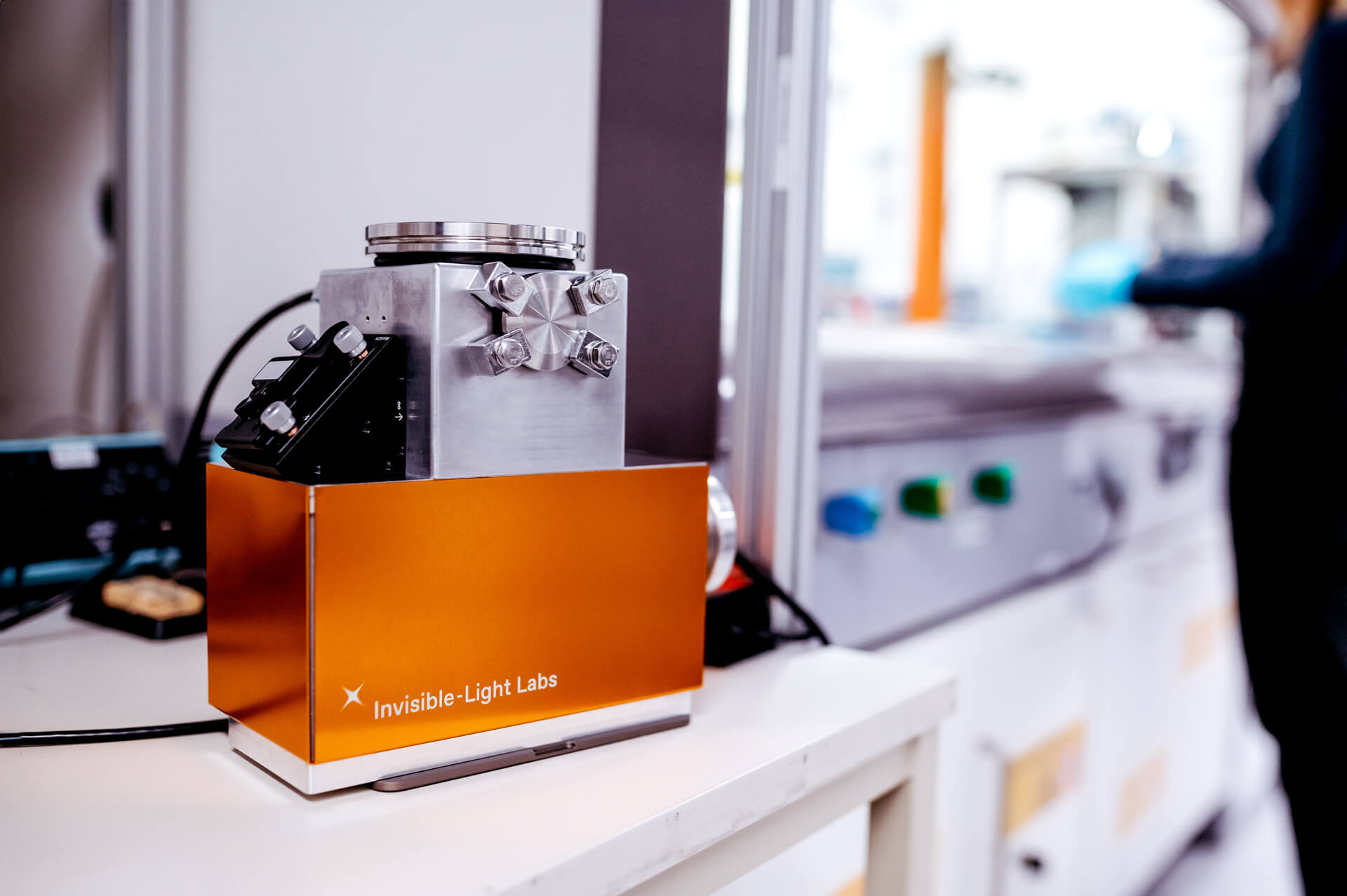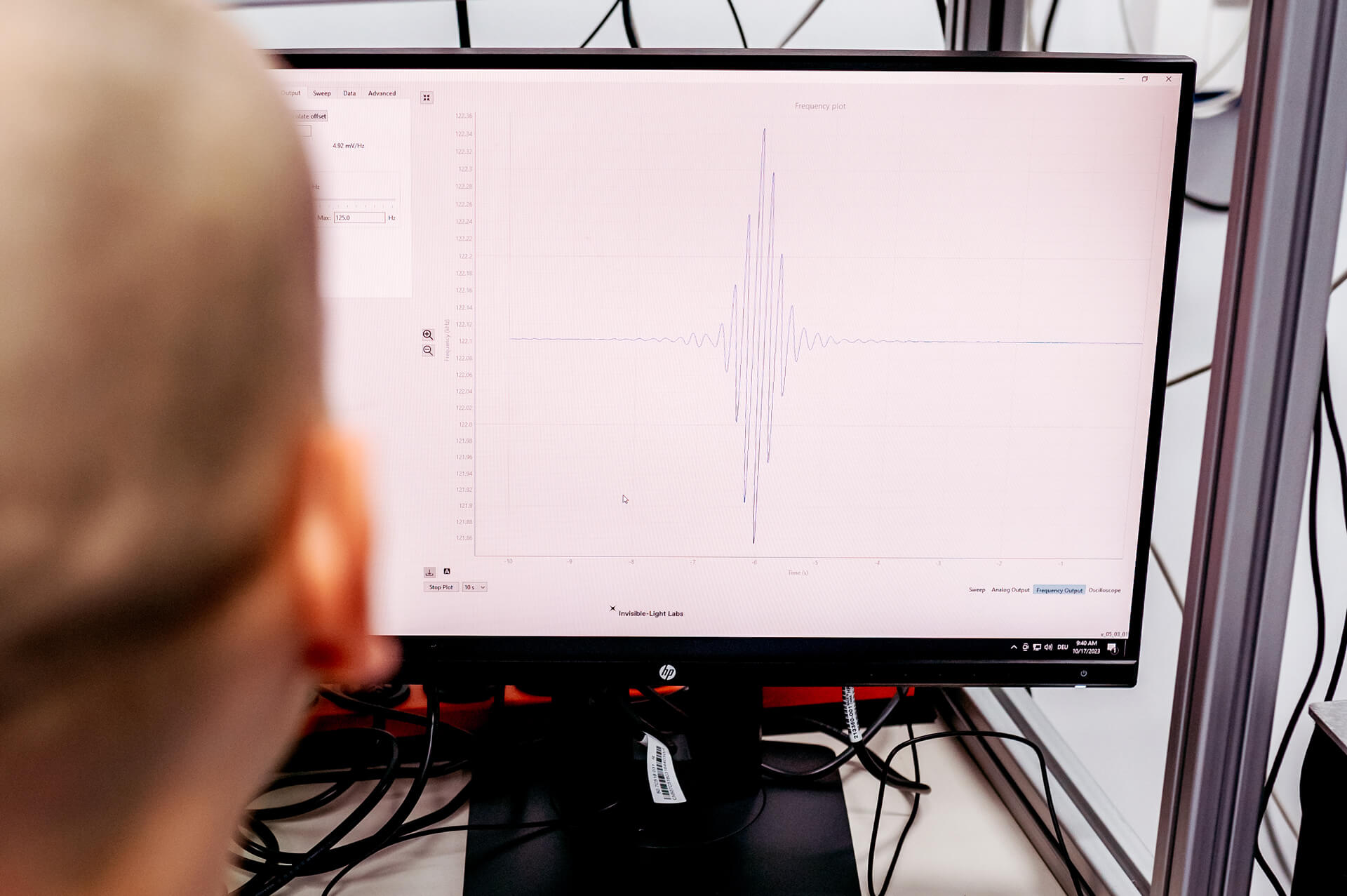It’s been the breakthrough of our research team at TU Wien to apply the nanomechanical point of view to the world of optics to create a radically new infrared detector especially suited to the analysis of nanomaterials.
APPROACH
Invisible-Light Labs empowers you to explore new frontiers in nanoparticles and nanomaterials analysis with our unique nanomechanical IR sensing technology.
0.1
–200ng
of material necessary for an analysis
10
–1500nm
nanoparticle size range
10 min
average analysis time to obtain an FTIR spectrum
15min
typical sampling time for ultrafine particles (UFPs) in urban air
1.5
–20µm
accessible spectral range
0
sample transfers necessary from aerosol collection to characterization
Sign up to be the first to learn about new products!
Our devices are developed to detect response at unprecedented room temperature over a wide wavelength range.
OUR PRODUCTS
Learn more about our nanomechanical infrared sensing product suite.

EMILIE
nanomechanical infrared analyser
Learn more

PHILL
resonance actuating & tracking electronics
Learn more

EMILIE SAMPLER
aerosol sampling accessory
Learn more

EMILIE CHIP
nanomechanical sampling and sensing chip
Learn more
We use an ultrasensitive nanomechanical membranes to detect infrared and terahertz radiation.
TECHNOLOGY
The measurement principle of EMILIE is based on the photothermal heating of the sample, causing a measurable frequency detuning of the EMILIE nanomechanical sampling and sensing chip.

FTIR SPECTROMETER INTEGRATION
Our EMILIE nanomechanical infrared analyser is compatible with FTIR spectrometry instrumentation.


QCL-BASED SPECTROMETER INTEGRATION
Our EMILIE nanomechanical infrared analyser is compatible with QCL-based spectrometers for increased sensitivity down to a few picograms.

BROAD SPECTRAL RANGE
EMILIE allows for the detection of near-IR to far-IR (THz) radiation with high sensitivity.

At Invisible-Light Labs, we strive to make a positive impact on the world we live in by enabling groundbreaking scientific discoveries with our highly sensitive IR sensors.
APPLICATIONS
The IR to THz region of the electromagnetic spectrum hosts a wealth of intriguing interactions between radiation and matter.
WHERE TO MEET US
Upcoming opportunities to talk to us in person and see our products.



Visit us at the world’s leading trade fair for laboratory technology, analysis, biotechnology and analytica conference
analytica.de/en/




